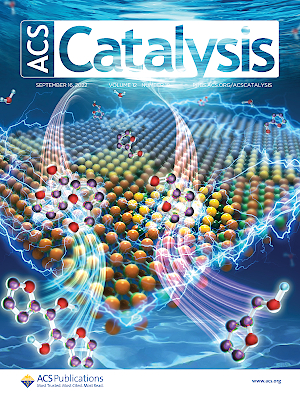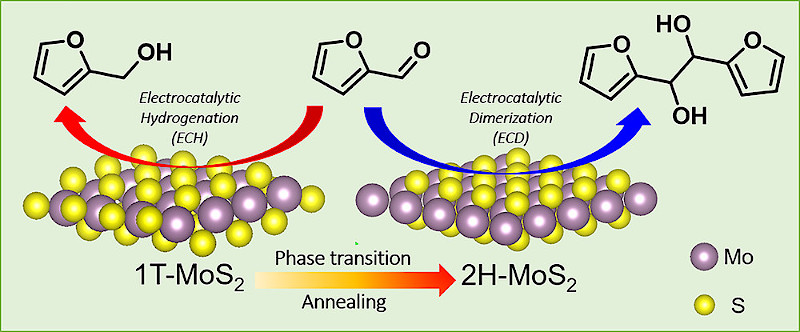Dr. Jason Lam’s research published and featured as the front cover article in ACS Catalysis
Dr. Jason Lam’s paper titled “The Structural Phase Effect of MoS2 in Controlling the Reaction Selectivity between Electrocatalytic Hydrogenation and Dimerization of Furfural” has been published in ACS Catalysis (DOI: https://doi.org/10.1021/acscatal.2c02137) and featured as the front cover article in Issue 18, Volume 12.

About the paper:
The development of a multifunctional electrocatalyst for upgrading biomass-derived platform molecules can diversify the product outcomes of a biorefinery and strengthen its role in the current petroleum-dominated economy. This study demonstrated how the structural phase distribution of a transition metal dichalcogenides (TMDs) catalyst, MoS2, can be exploited to control the reaction pathway between electrocatalytic hydrogenation (ECH) and electrocatalytic dimerization (ECD) of furfural (FFL). A series of carbon-supported MoS2 electrodes with different structural phase distributions, 1T and 2H, were prepared and fully characterized. The electrodes displayed good stability and successfully converted over 98% of FFL to target products. Under optimized conditions, the 1T-rich MoS2 electrodes were highly selective in producing an ECH product, furfuryl alcohol, with a selectivity of 94.4% over the ECD product, hydrofuroin, whereas the 2H-rich MoS2 electrodes achieved up to 42.7% selectivity for an ECD product. Mechanistic investigation with underpotential hydrogen desorption (HUPD) studies and density functional theory (DFT) calculation revealed that 1T and 2H-MoS2 played very different roles during the electrolysis of FFL. The HER-active 1T phase was less friendly to FFL’s adsorption than the 2H phase, but its ability to generate adsorbed hydrogen (Hads) provided the necessary component to complete the ECH process. The 2H phase was a better platform for FFL and its radical intermediate adsorption, but its Hads-deficient surface led to more ECD product. This study expands the opportunity to design multiphasic materials to control product selectivity during the electrocatalytic reduction of aldehyde compounds.
